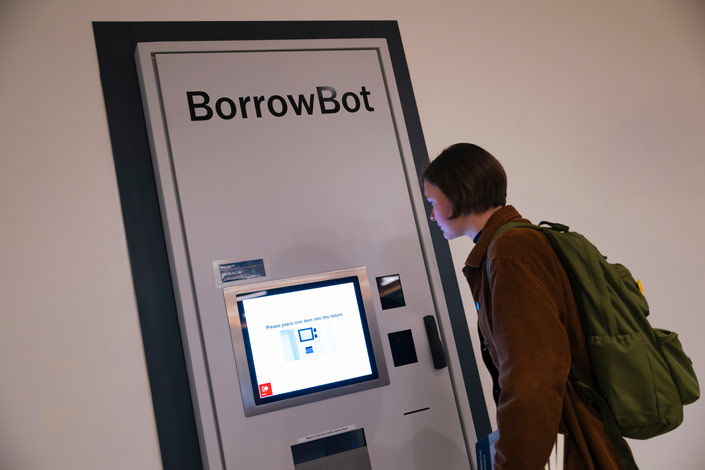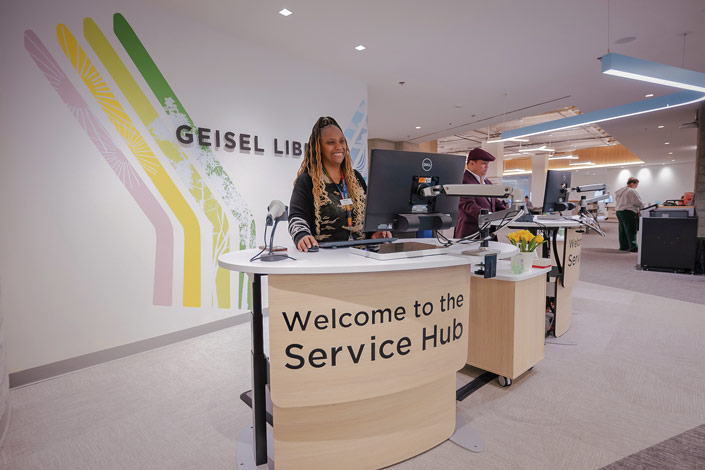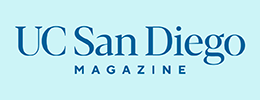UC San Diego Library Adapts to Meet the Needs of Today’s Students
Today’s college students value versatile library spaces that are adaptable to various needs.
Published Date
Story by:
Topics covered:
Share This:
Article Content
This article originally appeared in the spring 2024 issue of UC San Diego Magazine as “Making of the Modern Library.”
Since its opening in 1970, Geisel Library has been a central hub for campus scholarship and research. While its exterior continues to shine as a recognizable Brutalist architectural landmark, its interior has undergone a major renovation.
Nearly a decade ago, a revitalization initiative was established to transform and rejuvenate the building’s most heavily used spaces, prompting deep reflection on the current and future needs of UC San Diego students.
“Beyond academics, it’s crucial for the Library to proactively partner to address the fundamental needs of students while fostering their academic success alongside their well-being,” says Erik Mitchell, Audrey Geisel University Librarian. “We aim to create adaptable spaces that cultivate collaboration and inspiration.”
With more than 1.4 million visitors last year, including the students and faculty who rely on its invaluable resources, renovations in Geisel Library were executed in multiple phases and concluded in fall 2022.
Readily available digital information (often in the palm of your hand) has prompted libraries worldwide to rethink how and why visitors use its spaces. The Library has reevaluated its own user experience philosophy and embraced a digital-first and self-serve model. As a result, 18,700 square feet were remodeled throughout the entrance, lobby and central corridor, with 7,800 square feet of employee workspace converted into public user space.
“A few decades ago, people thought the emergence of digital information would lead to libraries without books or users,” says Mitchell. “Instead, we have seen that in a much more complex information world, our patrons need expanded support to find, evaluate and use information that advances learning and research.”
The Library Student Advisory Council (LSAC) is a pivotal force behind these transformative changes. With undergraduate and graduate representatives, LSAC regularly provides insights into space utilization and service enhancements to keep the Library attuned to the evolving needs of students. In turn, it allows students to co-create spaces and services, fostering a sense of ownership and belonging.
Today’s students value versatile spaces that are adaptable to various academic needs, including group work, engagement with print collections or research using computer workstations.
“Libraries have long sought to be places where curiosity and creativity can flourish.”
In response, the Library consolidated its research, technology, and teams and service points in one central location on the second floor to create the Service Hub.
“The Hub provides a modern approach to library services,” says Dani Cook, associate university librarian for learning and user experience. “Our commitment to student-centeredness involves data- informed decision-making and regular assessments to ensure we continue to meet their needs.”
For instance, the new BorrowBot, a self-service lending kiosk, provides access to technology items whenever the building is open. Additionally, the existing overnight study area was nearly quadrupled, and a 70-seat classroom was installed to meet demands for library instruction. This room, equipped with smart technology and flexible furniture, enhances group discussion and active learning. And when classes are not in session, students may study there.
“I use the library most for group study, and I appreciate there are spaces where collaboration is encouraged,” says current student Sam Propst, LSAC member. “Learning shouldn't be solitary; the best lessons are learned together.”
And in response to a growing need for study space, 200 seats were added, and areas formerly dedicated to physical-first services were repurposed. For example, the previous circulation desk is now the Meet Spot where students can browse books, gather and socialize.
Updates were also made to the digital sphere with the creation of a unified virtual service desk that includes real-time chat and various ways to connect with library subject experts. These enhancements have established a common foundation for access, whether a user is on site, at home or abroad.

The library also offers an unlikely respite from the rigors of academics. “Prioritizing well-being and mental health is integral to the college experience,” says Gen Thipatima ’18, library engagement, assessment and spaces manager. “In the wake of COVID-19, advocating for spaces and activities that nurture overall wellness is paramount.”
The Calm Cave, developed in response to student feedback, provides students with a sanctuary, encouraging relaxation and mental clarity. This room houses comfortable seating with incredible views from the sixth floor. The Library also offers frequent de-stress activities, such as yoga classes, therapy dog visits, watercolor painting and LEGO building.
And to enhance community engagement and reflection, a 1,000-square-foot exhibition gallery was added to the second floor to showcase its unique collections and creative works by students, faculty and alumni.
“Libraries have long sought to be places where curiosity and creativity can flourish,” says Mitchell, adding, “At our core, we are invested in being the network of support that makes our campus community thrive.”
The renovations show that as student, faculty and staff needs evolve, so too can the physical spaces they rely on. And as digital offerings become more complex, libraries continue to be repositories of knowledge and calm oases where community members can gather together.
Learn more about how the Library continues to evolve at library.ucsd.edu.
This article originally appeared in the spring 2024 issue of UC San Diego Magazine as “Making of the Modern Library.”

You May Also Like
Stay in the Know
Keep up with all the latest from UC San Diego. Subscribe to the newsletter today.





